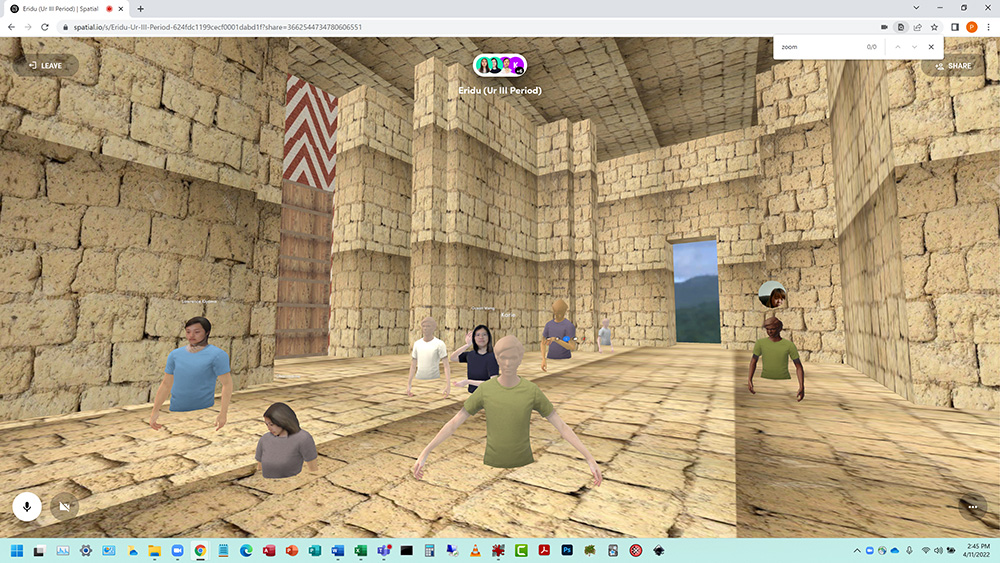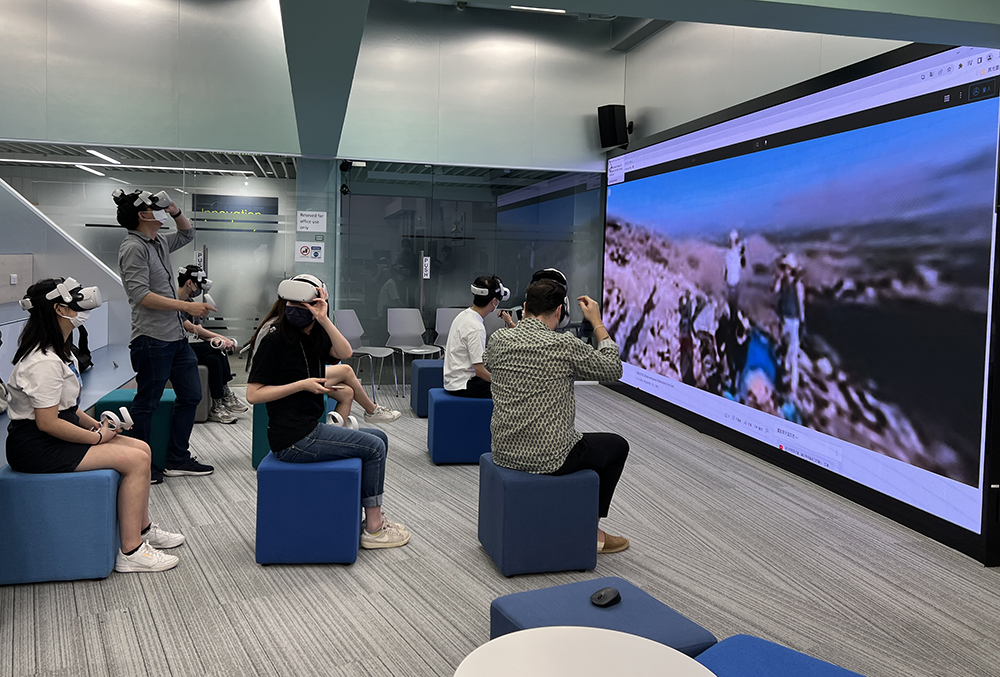November 2022 | Volume 24 No. 1
Digging It!
In the summer of 2019, Dr Peter J Cobb, a joint appointee of the Faculties of Education and Arts, decided to create a course around his archaeological fieldwork in Armenia. The idea was that HKU students would travel to the country the following summer to help with the excavation and learn about archaeology. The pandemic put those plans on hold in 2020 and 2021, but this year, despite the fifth COVID-19 wave, he successfully made use of technology to bring students virtually to the site – and even welcomed some adventurous ones who travelled there in person simply for the experience.
“I wanted students to learn about space in the past and how buildings and paths are laid out and relate to each other,” he said. He organised two course-based programmes, one that took students virtually around 3D models of Armenian and Iraqi sites that he created with the Faculties of Engineering and Architecture, the other that involved some students on-site and others in Hong Kong providing technical support.
When face-to-face teaching halted during spring, students in his introductory course to Mesopotamian archaeology used virtual reality (VR) headsets and sensors that allowed for the avatars of the teacher and students to interact in the virtual world even when they were in separate buildings in real life. The students were tasked with using archaeological evidence to create their own 3D models and write up Wikipedia entries on their chosen sites.
More hands-on work took place in the second programme in summer as pandemic restrictions eased. Some students chose to join Dr Cobb in Armenia as volunteers, while others in Hong Kong officially registered in his summer class. The collective output of both groups contributed directly to knowledge about the site.
“Everybody had something to do as part of their undergraduate research. The people in the field were doing physical digging and recording their finds and the people back in Hong Kong were focussed on digital work and creating 3D models of what was dug,” he said.

Students from the Emerging Societies: An Introduction to Mesopotamian Archaeology course visiting a 3D reconstruction of a temple virtually.
Livestreaming it
Students in Hong Kong attended weekly Zoom tours of the trenches led by students on-site. Dr Cobb also experimented with a 360-degree camera through which students in Hong Kong could ‘walk’ around the site and see things from different angles. The camera was linked to a suite in the Tam Wing Fan Innovation Wing of the Faculty of Engineering. There were some teething problems, given slow internet at the site, but they were able to get it up and running. “I don’t know of anyone who has tried to use a livestreamed 360-camera on an archaeological site before,” he said.
The on-site students – who included several of Dr Cobb’s research postgraduate students from Education and undergraduates from Science, Arts, Architecture and Social Sciences – had to dig, clean, sort and take hundreds of photographs of their finds and collect the coordinates of each location using a global navigation satellite system. This information was sent to the students in Hong Kong, who used it to create precise 3D models of each context where objects were found. Altogether, more than 100 of these models were constructed during the summer.
“The goal here is to make a kind of perfect 3D puzzle of intersecting context volumes that shows us the excavation of the trench, including where things were found and the relationship between the walls,” Dr Cobb said. “Archaeology is a destructive science and the only way to reproduce the experiment is to have the data available. With our dataset, other scholars can now ‘re-excavate’ the site and apply different research questions to that data.” He is collaborating with researchers from the Faculty of Engineering to apply data science methods to the digital data collected.

Students from the Cultural Heritage and Information in the Field course using virtual reality (VR) headsets in a VR class session.
Part of it
Students were enthusiastic about the experience, especially those who travelled to Armenia. Ye Xinyi, a fourth-year Bachelor of Arts (Art History and Music) student, said the fieldwork was physically and intellectually demanding, since they worked under a hot sun in a remote area. “But the idea that I am the first person to touch these incredible objects after they have been buried in the ground for perhaps 1,000 years gave me goosebumps.”
Claudia Ko Hiu-kwan, a recent Bachelor of Science (Chemistry and Biochemistry) graduate, appreciated the chance to learn more about ancient culture and material culture. She excavated in the trenches and helped with the ceramic analysis process in the laboratory. “I felt part of the archaeological team and this motivates me to continue my journey in this field.”
Charlotte Lam Hei-man, a fourth-year Bachelor of Science (Biochemistry) student, remained in Hong Kong creating models and supporting field members. Nonetheless, the VR sessions made her feel included in the dig. “I learned that archaeology is not just about fieldwork but draws knowledge from various disciplines, even from maths. Everyone from any speciality can contribute.”
The people in the field were doing physical digging and recording their finds and the people back in Hong Kong were focussed on digital work and creating 3D models of what was dug.

DR PETER J COBB

